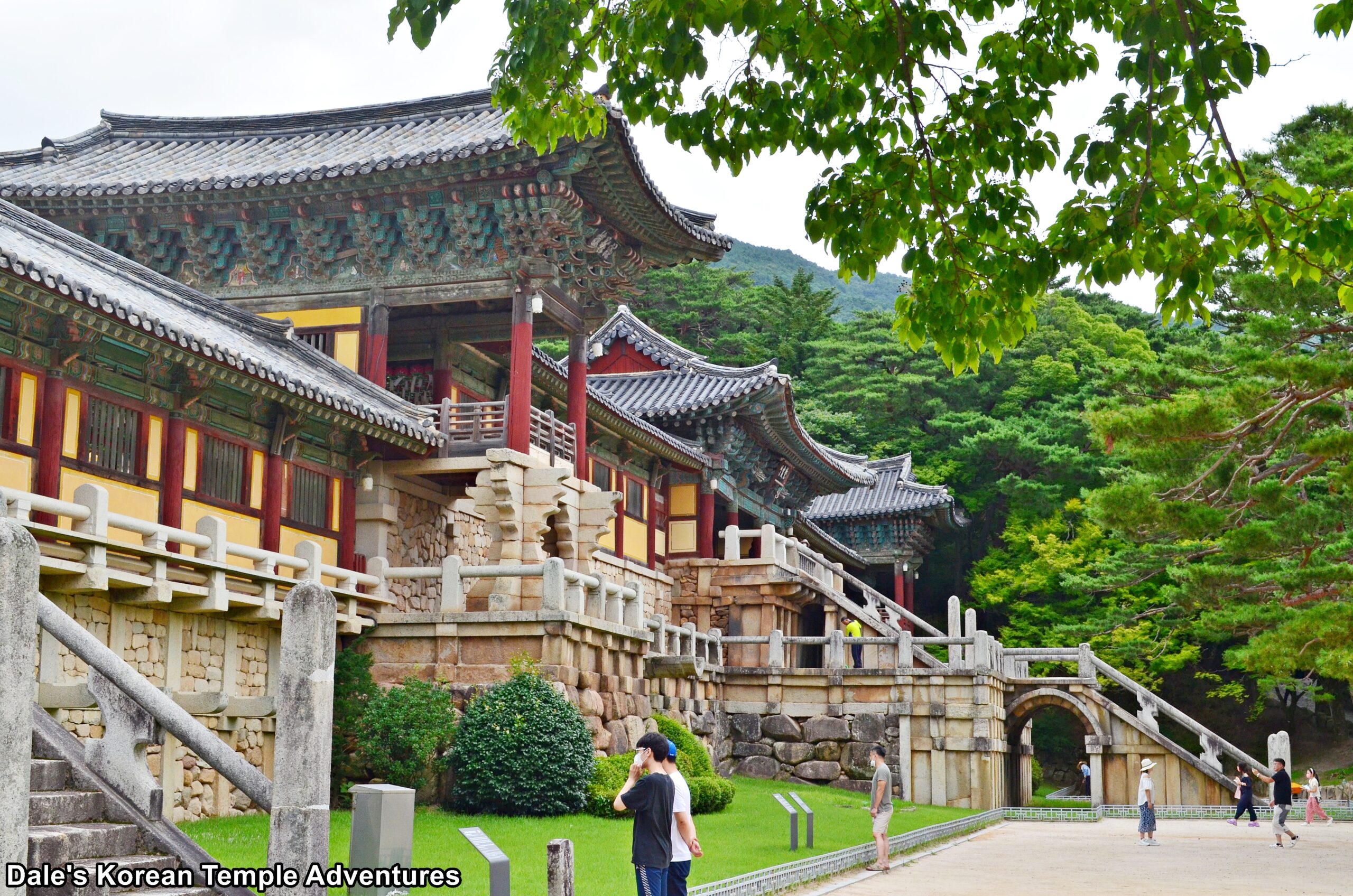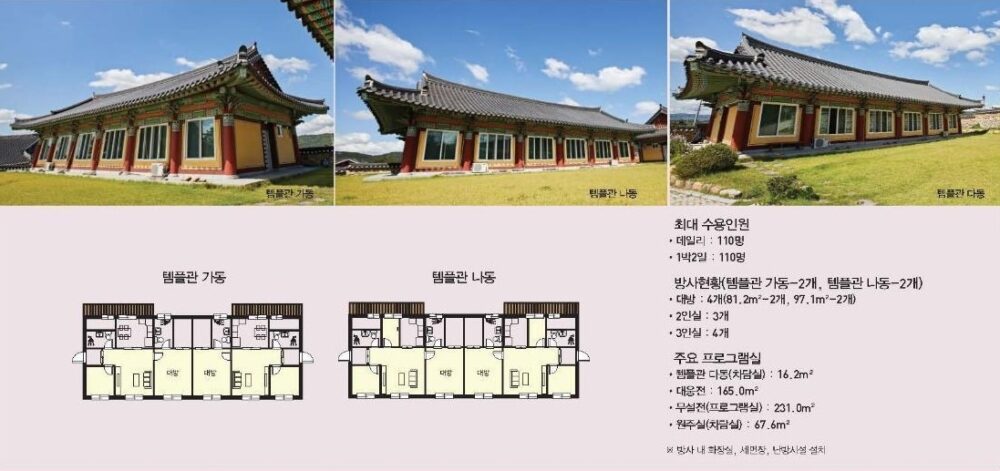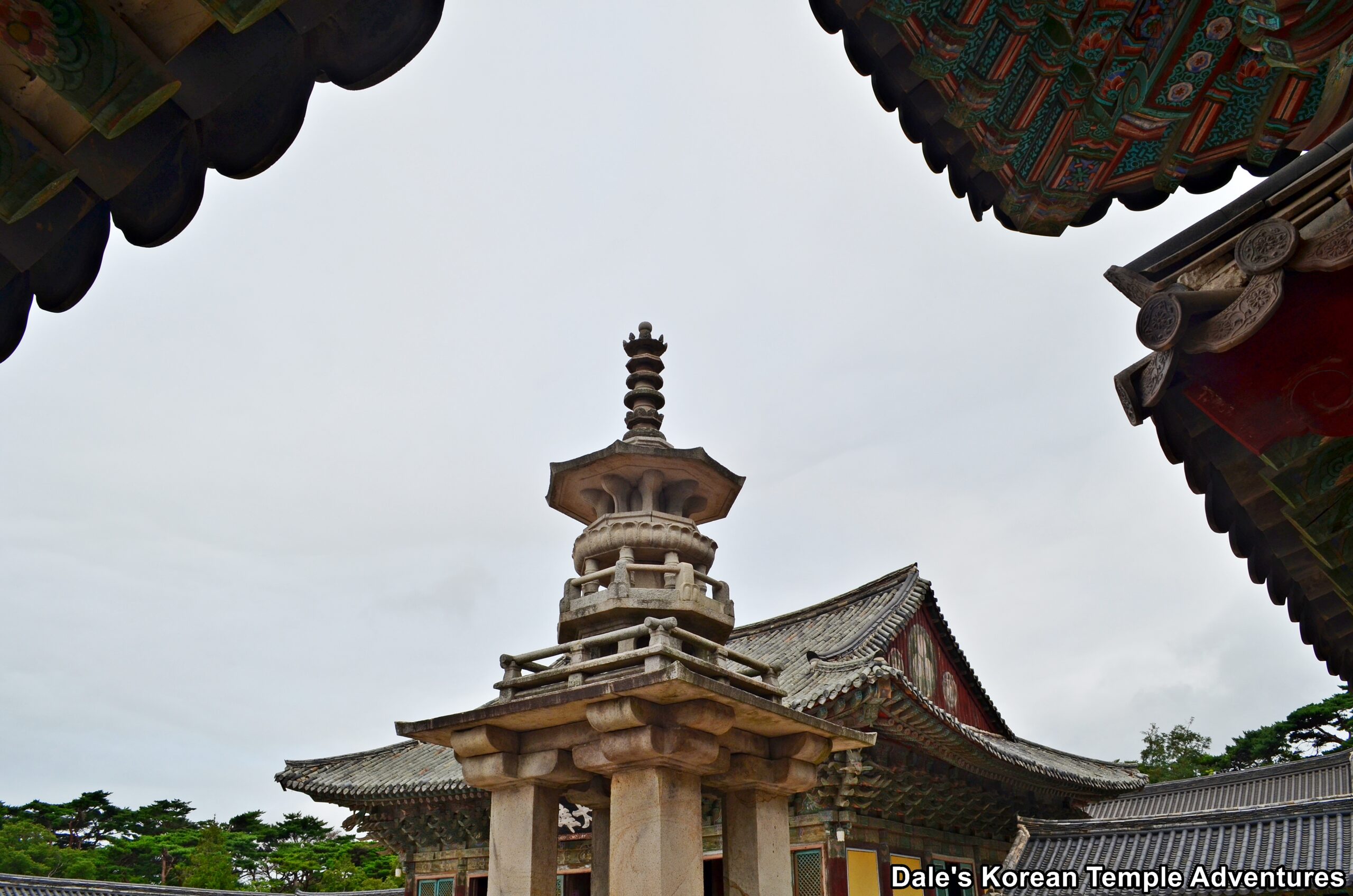Templestay – Bulguksa Temple (Gyeongju)

Introduction to Temple
Bulguksa Temple is arguably Korea’s most famous temple. It’s located in eastern Gyeongju, and it’s situated in the foothills of Mt. Tohamsan (745 m). Bulguksa Temple means “Buddha Kingdom Temple” in English. Bulguksa Temple was first constructed in 528 A.D., which was the first year that Buddhism was officially accepted by the Silla Kingdom (57 B.C. – 935 A.D.) during the reign of King Beopheung of Silla (r. 514-540 A.D.). Originally, the temple was named Beopryusa Temple or Hwaeom Bulguksa Temple.
Then nearly two hundred years later, the Bulguksa Temple that we know of today was first started in 742 A.D. The design and financial backing of the newly built Bulguksa Temple came from Prime Minster Kim Daeseong (700-774 A.D.). However, before the temple could be completed, Kim Daeseong died in 774 A.D., and Bulguksa Temple was completed during the reign of King Hyegong of Silla (r. 765 – 780 A.D.). It was at this time that Bulguksa Temple was given its current name.
Throughout the temple’s long history, Bulguksa Temple has been destroyed multiple times including the first time in the late 13th century by the invading Mongols. Later, the temple was reconstructed and renovated several times during the Goryeo Dynasty (918-1392) and the Joseon Dynasty (1392-1910). Bulguksa Temple was destroyed, once more, by the invading Japanese during the Imjin War (1592-1598). After its 1593 destruction, another major reconstruction took place at Bulguksa Temple in 1604. And in 1700, the original layout of the temple was completely restored. It was in 1805 that Bulguksa Temple fell into disrepair and was looted by robbers.
Bulguksa Temple was then initially repaired during the early part of Japanese Colonial Rule (1910-1945) from 1918 to 1925. It was further renovated from 1934 and 1935. Then after the Japanese Colonial Rule came to an end, an extensive restoration took place from 1963 to 1973 under President Park Chung-hee (1917-1979). In total, some 24 buildings were renovated and rebuilt. During the 1980’s and 1990’s, Bulguksa Temple simply acted as a major tourist attraction. However, in the year 2000, the management of Bulguksa Temple was transferred over to the Jogye-jong Order, and the temple resumed its central role in Korean Buddhism, once more. Bulguksa Temple, along with the neighbouring Seokguram Hermitage, was declared a UNESCO World Heritage Site in 1995. Also, Bulguksa Temple is home to 7 National Treasures (the most at any Korean Buddhist temple), and an additional 6 Korean Treasures.
Bulguksa Temple conducts a single Templestay program. It’s The Fragrance of a Thousand Years Program, which is a one night, two day program that focuses on a temple tour, prayer bead making, ceremonies, and meditation.
For more on Bulguksa Temple.
Directions
From the Gyeongju Intercity Bus Terminal, you can take either Bus #10 or Bus #11 that goes directly to Bulguksa Temple. The ride takes about one hour in length to get to the temple.
Templestay Programs
The Templestay program at Bulguksa Temple is entitled The Fragrance of a Thousand Years Program. Here is the one night, two day program at this beautiful temple:
A: The Fragrance of a Thousand Years Program
| Time | Title |
|---|---|
| 14:00-14:30 | Check-In |
| 15:00-16:00 | Orientation |
| 16:00-17:30 | Temple Tour |
| 17:30-08:10 | Temple Dinner |
| 18:10-18:50 | Meditation & Buddhist Ceremony |
| 18:50-20:00 | Making 108 Prayer Beads |
| 20:00-20:30 | Circumambulate Pagodas |
| 20:30-21:00 | Bedtime |
| Time | Title |
|---|---|
| 05:10-05:20 | Wake-Up Call |
| 05:30-06:00 | Breakfast |
| 06:00-07:30 | Seon Meditation with a Monk |
| 07:30-09:30 | Teatime with a Monk or Seokguram Grotto Tour |
| 10:00-11:00 | Free Time & Check-Out |
(This schedule is subject to change)

Temple Information
Address: 385 Bulguk-ro, Gyeongju-si, Gyeongsangbuk-do, Republic of Korea
Tel: +82-10-7773-0983
E-mail: bulguksa@templestay.com
Fees
The Fragrance of a Thousand Years Program – adults – 90,000 won; students (up to 18 years of age) – 80,000 won; pre-schooler – 50,000 won
*The cancellation policy is as follows: 3 days before: 100% refund; 2 days before: 70% refund; 1 day before: 50% refund; the day of the reservation there is no refund.
Links
Reservations for the The Fragrance of a Thousand Years Program
